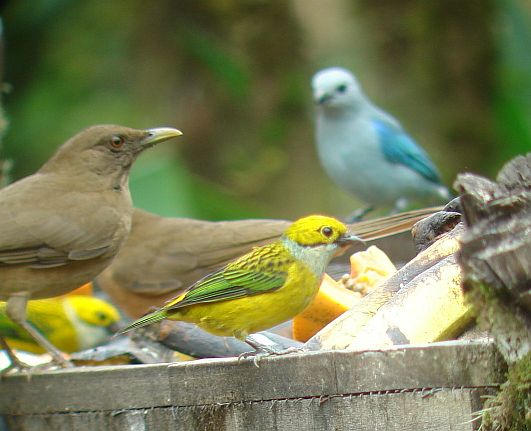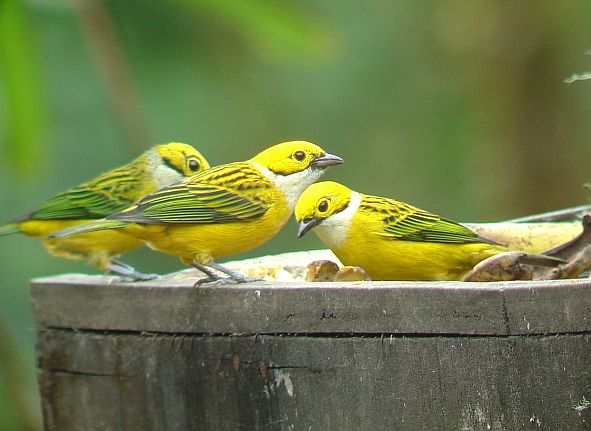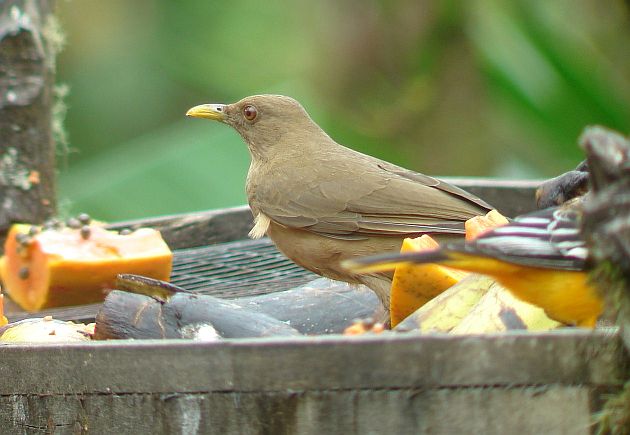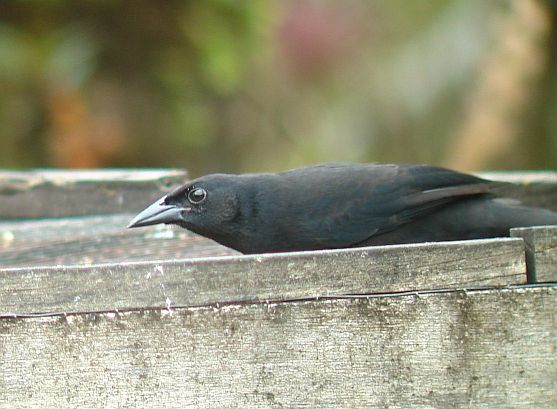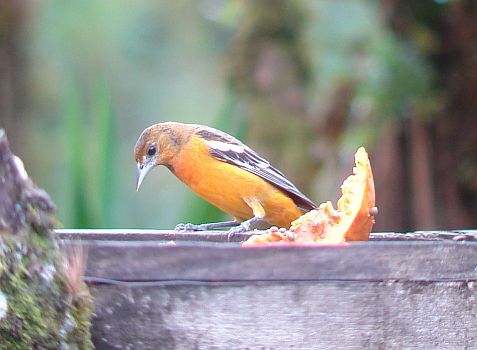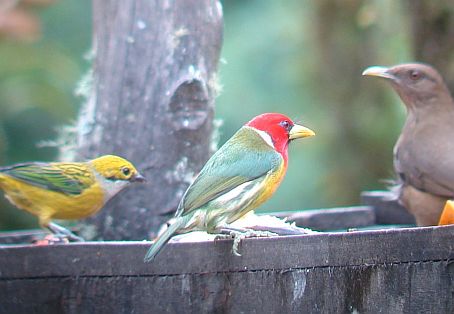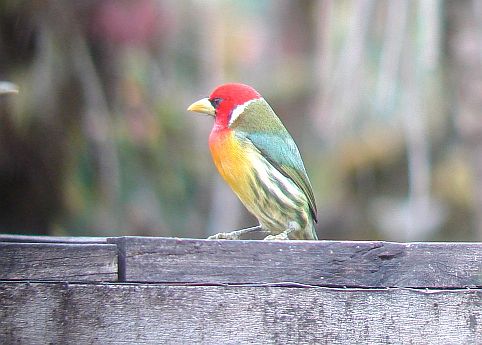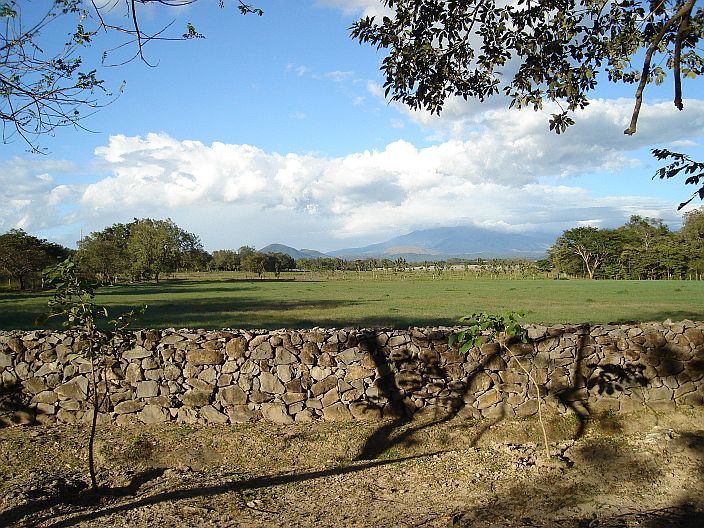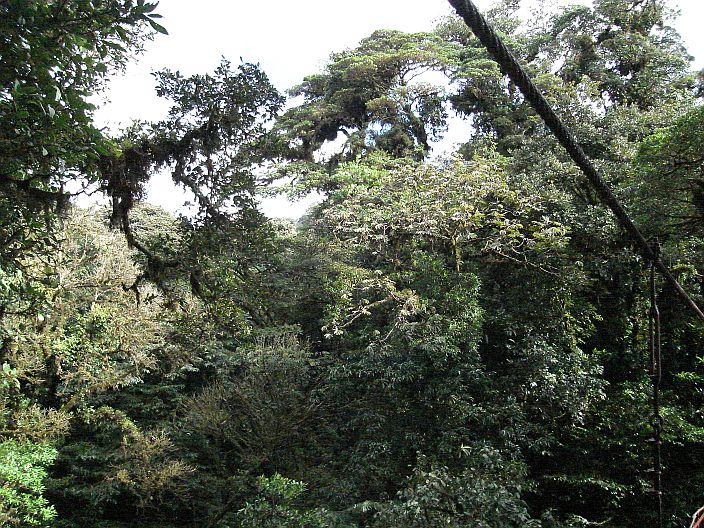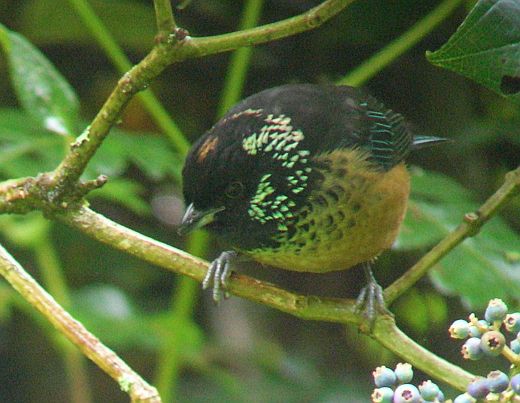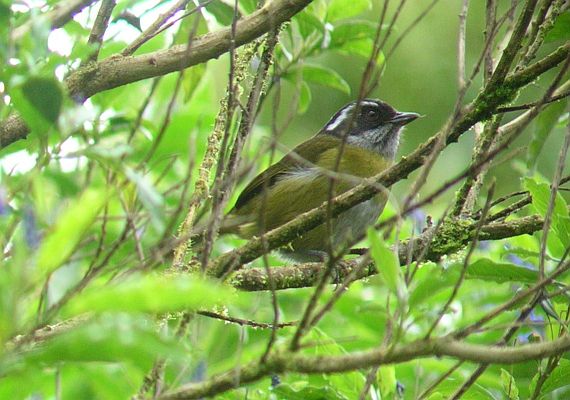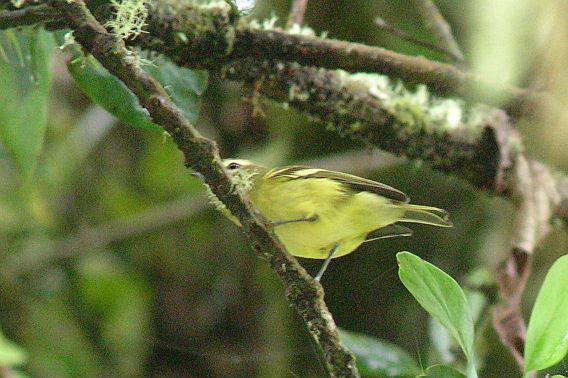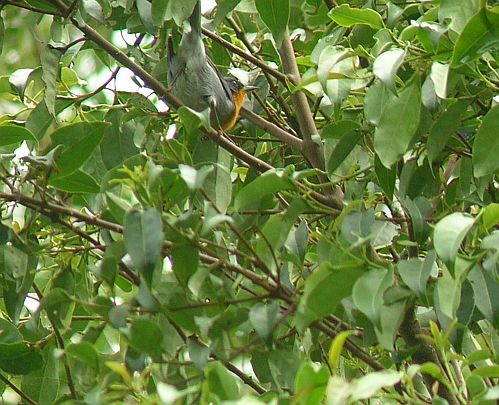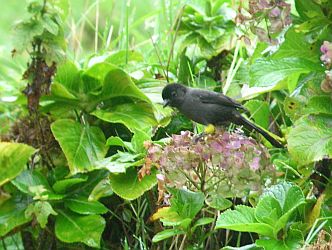With so many excellent possibilities to choose from when birding Costa Rica, it can be difficult to decide upon an itinerary. “Classic” sites like Sarapiqui, Monteverde, the Dota Valley, and Carara tempt with easy access, good infrastructure, and mouth watering trip reports. The biologically hyperactive Osa Peninsula, tall forests of Tortuguero, and monkey rich Santa Rosa National Park beckon to birders looking for a wilderness experience. Adventurous birders and naturephiles will be impressed with the fantastic birding and high diversity at sites located off the radar such as Heliconias Lodge, Hitoy Cerere, and Manzanillo.
No matter where you decide to focus birding time and energy when visiting Costa Rica, make room in the schedule for Tapanti National Park. At least a day but two or three would be even better. My reasons for getting excited about birding Tapanti and surroundings are probably why most birding tour companies include a visit to the lush forests of this middle elevation site:
- There are few other places in Costa Rica where you have a fair chance at seeing the likes of: White-bellied Mountain-Gem, Green-fronted Lancebill, Black-bellied Hummingbird, Scaled Antpitta, Ochre-breasted Antpitta (good candidate for splitting from South American taxa), Black-banded Woodcreeper, Lineated Foliage-gleaner, Buff-fronted Foliage-gleaner, Streaked Xenops, Immaculate Antbird, Rufous-rumped Antwren, Lesser Elaenia, White-fronted Tyrannulet, Dark Pewee, Sharpbill, and White-winged Tanager.
- You also have a fair chance of seeing target species such as: Black Guan, Ornate Hawk-Eagle, Violet Sabrewing, Green Thorntail, Red-headed Barbet, Prong-billed Barbet, Brown-billed Scythebill, Tawny-throated Leaftosser, Streak-breasted Treehunter, Red-faced Spinetail, Silvery-fronted Tapaculo, Scale-crested Pygmy-Tyrant, Golden-bellied Flycatcher, Brown-capped Vireo, Black-faced Solitaire, Slaty-backed Nightingale-Thrush, American Dipper, Azure-hooded Jay, Spangle-cheeked Tanager, Silver-throated Tanager, Ochraceous Wren, and Elegant Euphonia.
- The park is easily accessible and there are various options for lodging within a twenty minute drive.
- Most of the birds can be seen along a wide, easily walked road through the park or along an easy, loop trail.
- Situated 2 kilometers from the park entrance, Kiri Lodge is a good place for lunch and has excellent bird feeding tables.
On a day trip to the park last weekend, my birder friend Susan and I didn’t come close to getting all of the above but we still had a great day of birding in beautiful surroundings. Here is a quick run-down of our day:
Susan picks me up in Santa Barbara de Heredia at 5 a.m. and off we go through the streets of the Central Valley on our way to Tapanti! Light traffic at dawn is a serious boon but twisting, winding roads and occasional lights and signs that tell us to stop make it an hour and a half drive. We both agree that we should have left at 4.
Scenery doesn’t become truly beckoning or beautiful until we decend into the Orosi Valley, take in huge draughts of fresh, country air, and listen to the Orange-billed Nightingale Thrushes, Clay-colored Robins, Black Phoebes, Brown Jays, Plain Wrens, Rufous-capped Warblers, Yellow-faced Grasquits, and other birds that chip, sing, and call from surrounding coffee plantations.
Nearing the park, we stop at an inviting spot along the road with a brushy field on one side and a lush forest on the other.
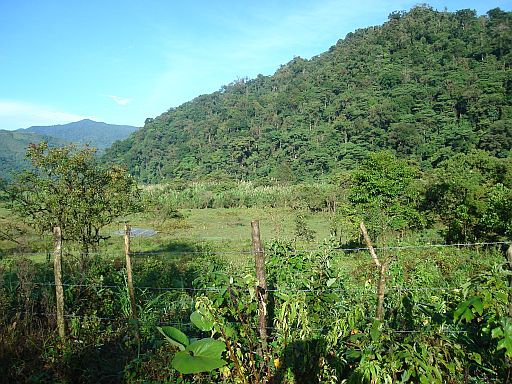
Hoping for migrants, I start up with the spishing as soon as I step out of the car and a few birds show up- three Chestnut-sided Warblers, two Wilsons Warblers, a couple of Tennessees, and one smart looking male Golden-winged Warbler. They are just as likely to have have arrived for the winter as they are migrants stopping for a “coffee break” on their way to more southerly haunts.
I was hoping that the brushy field would turn up a Lesser Elaenia or White-throated Flycatcher but Black Phoebe, Yellow-faced Grasquit, Golden-hooded Tanager, and Gray-crowned Yellowthroat were the only birds that made an appearance. Nevertheless, it was a perfect place to just stand still, watch the sun begin to chase away the shadows, and listen to the dawn chorus. Birds in Costa Rica don’t sing as much during October but I still heard Bright-rumped Atilla, Smoky-brown Woodpeckers, Brown Jays, Tawny-throated Leaftosser, Immaculate Antbird, and Rufous-breasted Antthrush.

This is the latter half of a Gray-crowned Yellowthroat.
We continue past non-birdy sun coffee and stop just outside the park entrance where forest finally greets us on both sides of the road. This area is always productive and Saturday was no exception with Silver-throated and Common Bush Tanagers trooping through the treetops, Black-faced Solitaire and Slaty-backed Nightingale-Thrush popping into view, and Tawny-capped Euphonias feeding on a branch that hung over the road.

At 8 a.m. (opening time for the park), we went to the park entrance and the friendly ranger urged us to check out their exhibit of road killed animals. I stress “road killed animals” as opposed to “road kill” because the animals were stuffed and on display as opposed to being shown in sad, squashed, and mangled positions (although they had some gruesome pictures of this too). In their hope to educate visitors about biodiversity in the area and the hazards local fauna face on the roads, they showed a Tapir

a Puma,

and an Ocelot!

Cases of ridiculous looking insects were also on display.


Just outside the ranger station, we ran into a nice flock of birds and got close looks at Red-headed and Prong-billed Barbets, Spotted Barbtail, Red-faced Spinetail, Wedge-billed Woodcreeper, Brown-capped Vireo, Slate-throated Redstart, Golden-crowned, Rufous-capped, Black and White, and Chestnut-sided Warblers, Elegant Euphonia, and more Common Bush Tanagers. Not with the flock but in the same area were Stripe-throated Hermit, White-bellied Mountain-Gem, and Black-bellied Hummingbird.
I was also hearing Golden-bellied Flycatcher and Dark Pewee at this time but they stayed out of sight.
As we were on a mild-mannered mission to see antpittas, we drove up the road to the oddly named Oropendola Trail (because you don’t usually see them there) and crept down towards the river with the hopes that a Scaled Antpitta would bound into view. Just as we made a silent, ninja-like approach to a suitable, wet-looking spot that looked like home for an antpitta, a park worker came happily bounding down the trail instead and foiled our plan. Ahh, but a trick was up our sleeve (actually in my backpack) and it came in the form of a Scaled Antpitta recording. I played the odd bubbling sound of this skulking king but despite our careful scanning of the undergrowth absolutely nothing was seen so we conceded defeat and moved on. The rest of the Oropendola Trail was quiet but we managed to pick up Slaty Antwren and got nice looks at Scale-crested Pygmy Tyrant (it wasn’t nice enough to keep still for a photo).
Both feeling fit enough to scale the steep trail known as the “Arboles Caidos” (means “Fallen Trees” but should be called “Personas Caidos” (Fallen People) because of its gradient), we slowly walked up and into the old growth, crazily mossed cloud forests found along this trail. Our target here was the Ochre-breasted Antpitta. It has been seen on both trails at Tapanti but is espied more often on the Arboles Caidos. Lots of other good birds are also possible but the going sure is tough! Fortunately, you are more likely to see Black-banded Woodcreeper, antpittas, and Rufous-breasted Antthrush if you move along at a slow pace and do lots of sitting around and waiting (nearly required anyways if you haven’t been training for triathalons).
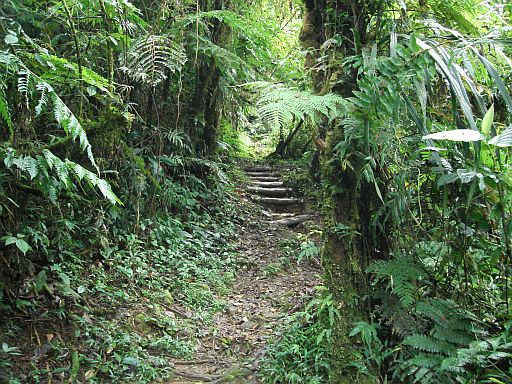
A rough trail through the best of habitats.
I managed to get photos of Sooty-faced Finch but we saw few other birds (including of course the other antpitta) although I shouldn’t be surprised because in being there during the mid-morning, we were absurdly looking for birds at the quietest time of the day AND only spent an hour at most on the trail.

Sooty-faced Finch- a regional endemic you don’t want to miss when birding Costa Rica.
Back down to the car, we made our way to Kiri Lodge just outside of the park and ate fried chicken while watching the awesome action on their feeding table. Check my other post about that avian eye candy experience!
Still hoping for a hefty mixed flock, after lunch, we headed back into the park and stopped whenever we heard birds. A female Collared Trogon was turned up, more looks at Slaty-backed Nightingale-Thrush that were feeding with tiny Labidus sp. army ants, Golden-browed Chlorophonias, and yes, we got a couple of mixed flocks.
The action was fast and furious (and who knows what was missed) but we got onto some good ones such as Streak-breasted Treehunter, Lineated Foliage-gleaner, Spotted Woodcreeper, Barred Becard, Spangle-cheeked Tanagers, and Streaked Xenops.
Not long after, it began to rain and we started the trek back up into the concrete, paucity of trees, and “civilization” of the Central Valley after a much needed breath of fresh air and birds at Tapanti National Park.
Bird list from our day trip on October 23rd, 2010
| Black Vulture | a few |
| Turkey Vulture | a few |
| Osprey (they like to hang out at the Kiri Lodge trout ponds) | 2 |
| Broad-winged Hawk | 1 |
| American Kestrel (my first for the year!) | 1 |
| Spotted Sandpiper | 1 |
| Red-billed Pigeon | several |
| Crimson-fronted Parakeet | 6 |
| Brown-hooded Parrot | 4 |
| Green Hermit | 4 |
| Stripe-throated Hermit | 1 |
| Purple-crowned Fairy | 1 |
| White-bellied Mountain-Gem | several |
| Black-bellied Hummingbird | several |
| Green-crowned Brilliant | 1 |
| Rufous-tailed Hummingbird | 1 |
| White-collared Swift | several |
| Red-headed Barbet | 4 inside the park, 2 at the Kiri tables |
| Prong-billed Barbet | 4 inside the park |
| Collared Trogon | 1 |
| Smoky-brown Woodpecker | 1 heard |
| Wedge-billed Woodcreeper | several |
| Spotted Woodcreeper | 1 |
| Tawny-throated Leaftosser | 1 heard |
| Streak-breasted Treehunter | 1 |
| Lineated Foliage-gleaner | 1 |
| Spotted Barbtail | several |
| Red-faced Spinetail | several |
| Rufous-breasted Antthrush | 1 heard |
| Immaculate Antbird | 2 heard |
| Slaty Antwren | 2 |
| Silvery-fronted Tapaculo | 1 heard |
| Golden-bellied Flycatcher | 2 heard |
| Boat-billed Flycatcher | 1 heard |
| Dark Pewee | 1 heard |
| Black Phoebe | 4 |
| Scale-crested Pygmy Tyrant | several |
| Slaty-capped Flycatcher | 3 |
| White-ruffed Manakin | a few Heard |
| Barred Becard | 1 |
| Blue and white Swallow | several |
| Black-faced Solitaire | several |
| Slaty-backed Nightingale-Thrush | several |
| Swainsons Thrush | several |
| Clay-colored Thrush | several |
| Black and yellow Silky Flycatcher | several |
| Brown-capped Vireo | 1 |
| Brown Jay | 5 |
| House Wren | 2 |
| Ochraceous Wren | 3 |
| Band-backed Wren | 1 |
| White-breasted Wood Wren | 1 heard |
| Gray-breasted Wood Wren | several Heard |
| Gray-crowned Yellowthroat | 2 |
| Rufous-capped Warbler | 6 |
| Three-striped Warbler | 4 |
| Golden-crowned Warbler | several |
| Black and white Warbler | 4 |
| Black-throated Green Warbler | 1 |
| Tennesee Warbler | 4 |
| Chestnut-sided Warbler | several |
| Golden-winged Warbler | 1 |
| Bananaquit | 2 |
| Common Bush Tanager | several |
| Blue gray Tanager | 2 |
| Palm Tanager | 2 |
| Spangle-cheeked Tanager | several |
| Silver-throated Tanager | several |
| Golden-hooded Tanager | 1 |
| Summer Tanager | 1 |
| Sooty-faced Finch | 1 |
| Chestnut-capped Brush Finch | 1 heard |
| Yellow-faced Grasquit | several |
| Tawny-capped Euphonia | several |
| Golden-browed Chlorophonia | several |
| Elegant Euphonia | 4 |
| Baltimore Oriole | 4 |
| Black-cowled Oriole | 1 |
| Melodious Blackbird | 2 |


